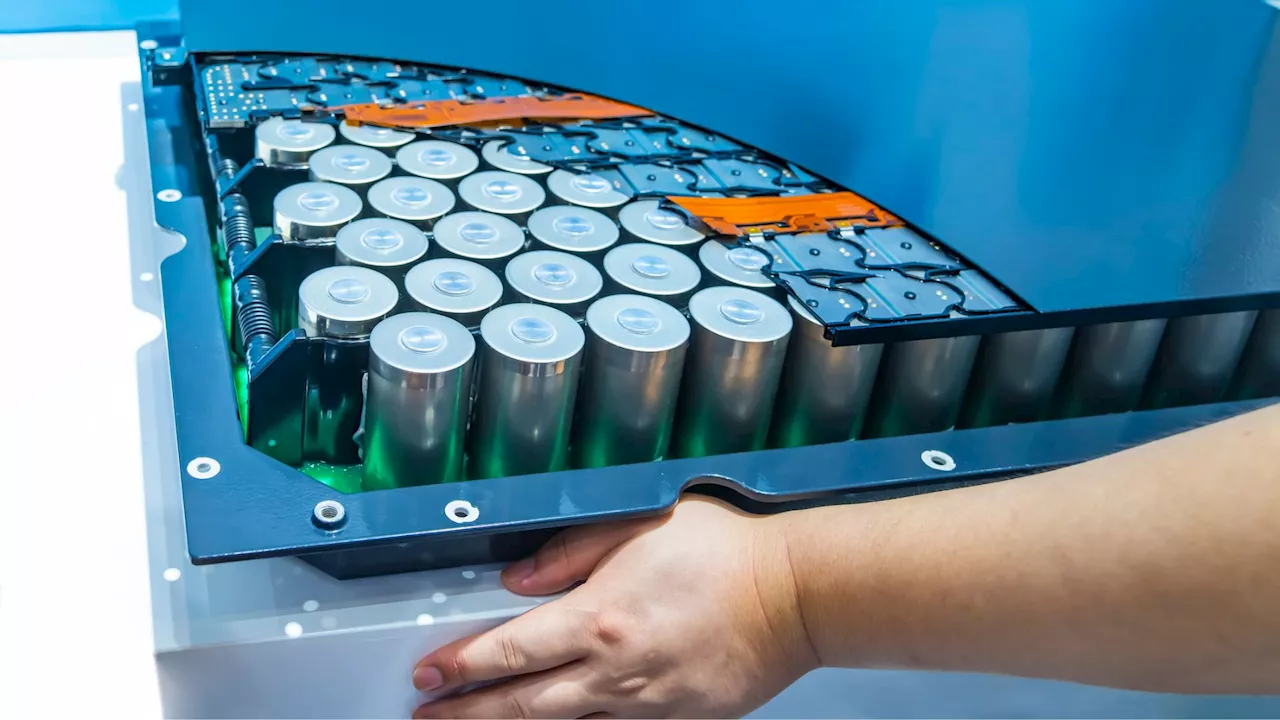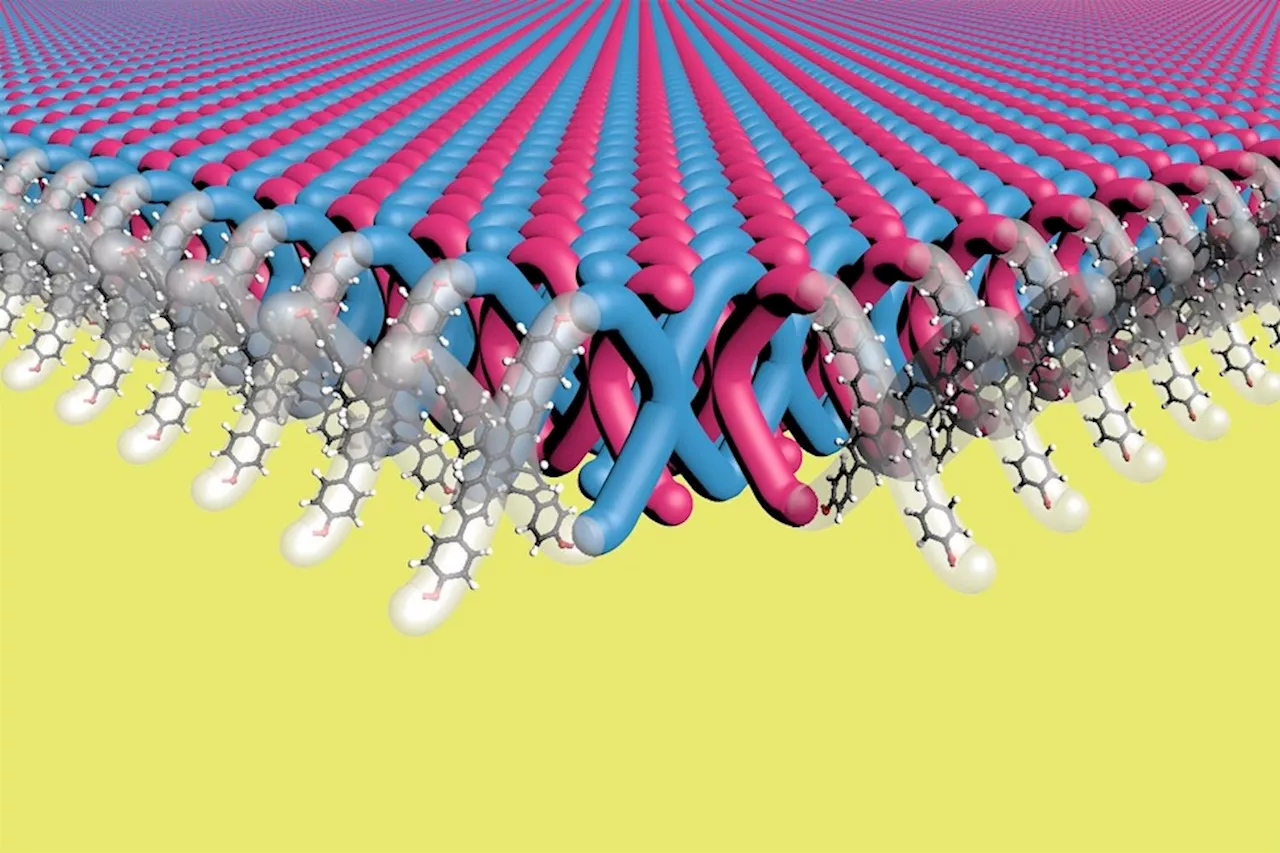Researchers at Northwestern University have created a groundbreaking 2D material with exceptional strength and flexibility, potentially revolutionizing industries like body armor and ballistic fabrics. The material, built on a nanoscale level, features a unique structure of mechanically interlocked molecules, offering unparalleled toughness and resilience.
Imagine armor as light as fabric yet stronger than steel, built from materials that link together like molecular chainmail. Scientists may have just taken the first step toward making it a reality. A team of researchers led by Northwestern University scientists has developed what might be the first two-dimensional (2D) mechanically interlocked material, similar to links in chainmail.
The material, detailed in a January 16th publication, is exceptionally flexible and strong, with promising applications in products such as lightweight body armor and ballistic fabrics.The researchers built the material on a nanoscale level, meaning its individual components are measurable in nanometers. It’s technically a polymer—a substance made of large molecules, which are themselves made up of smaller chemical units called monomers. Examples of polymers include proteins, cellulose, and nucleic acids. The 2D mechanically interlocked material is a polymer structure that uses mechanical bonds—bonds with physical interlocking, as opposed to, for example, covalent bonds, which usually make up polymers and involve the sharing of electrons. The material features 100 trillion mechanical bonds per 0.16 square inch (1 square centimeter), which is the highest density of mechanical bonds ever made, according to the researchers.“It’s similar to chainmail in that it cannot easily rip because each of the mechanical bonds has a bit of freedom to slide around. If you pull it, it can dissipate the applied force in multiple directions. And if you want to rip it apart, you would have to break it in many, many different places. We are continuing to explore its properties and will probably be studying it for years,” said Dichtel. The biggest challenge in creating mechanically interlocked molecules lies in figuring out how to guide polymers into forming mechanical bonds. Madison Bardot of Northwestern University, who led the study, is credited with coming up with a new method to achieve this. The team positioned x-shaped monomers into a crystalline structure (a specific ordered arrangement) and reacted the crystals with another molecule. This reaction created mechanical bonds within the crystals. The final product is 2D layers of interlocked polymer sheets made of these bonds between X-shaped monomers, whose gaps researchers filled with more X-shaped monomers. “It was a high-risk, high-reward idea where we had to question our assumptions about what types of reactions are possible in molecular crystals,” said Dichtel. The resulting material is incredibly strong, yet still flexible and easy to manipulate, because the individual sheets of interlocked molecules come apart from each other when the polymer is dissolved in a solvent. “After the polymer is formed, there’s not a whole lot holding the structure together,” he added. “So, when we put it in solvent, the crystal dissolves, but each 2D layer holds together. We can manipulate those individual sheets.” While previous researchers had made mechanically bonded polymers in very small quantities that would have been difficult to mass produce, the team’s new method is surprisingly scaleable. They made over one pound (0.5 kilograms) of the material, and suggest the possibility of making even more. Even a small percentage of the new polymer structure, however, can improve other substances. The researchers made a material composed of 97.5% Ultem fiber (an extremely tough material in the same family as Kevlar) and 2.5% of the 2D polymer, and concluded that the mixture had made the former significantly stronger. “We have a lot more analysis to do, but we can tell that it improves the strength of these composite materials,” Dichtel continued. “Almost every property we have measured has been exceptional in some way.
Nanotechnology Materials Science Polymer Science Body Armor Ballistic Fabrics Mechanical Interlocking
United States Latest News, United States Headlines
Similar News:You can also read news stories similar to this one that we have collected from other news sources.
 Army Scientists Develop Revolutionary Battery Surface TreatmentU.S. Army researchers have made a breakthrough in energy storage technology by developing a novel surface treatment technique that significantly enhances the performance and longevity of rechargeable zinc batteries. This innovation, originating from the Army Research Laboratory (DEVCOM ARL), utilizes an acidic solution to create an ultra-thin protective layer on the battery's electrodes, leading to improved power output and extended lifespan. This advancement paves the way for more reliable power sources for military equipment and has the potential to revolutionize various civilian applications.
Army Scientists Develop Revolutionary Battery Surface TreatmentU.S. Army researchers have made a breakthrough in energy storage technology by developing a novel surface treatment technique that significantly enhances the performance and longevity of rechargeable zinc batteries. This innovation, originating from the Army Research Laboratory (DEVCOM ARL), utilizes an acidic solution to create an ultra-thin protective layer on the battery's electrodes, leading to improved power output and extended lifespan. This advancement paves the way for more reliable power sources for military equipment and has the potential to revolutionize various civilian applications.
Read more »
 Engineering researchers develop revolutionary diamond fabrication technologyA research team has developed a groundbreaking method for massively producing ultrathin and ultra-flexible diamond membranes.
Engineering researchers develop revolutionary diamond fabrication technologyA research team has developed a groundbreaking method for massively producing ultrathin and ultra-flexible diamond membranes.
Read more »
 Chinese Scientists Discover Revolutionary Method to Boost Explosive Power Using Steamed BunsChinese scientists have made a groundbreaking discovery that can significantly enhance the performance of China Lake Compound no. 20 (CL-20), one of the world's most powerful explosives, by using a surprising ingredient: steamed buns. This novel method not only boosts CL-20's explosive power but also improves its stability, potentially enabling its use as missile fuel.
Chinese Scientists Discover Revolutionary Method to Boost Explosive Power Using Steamed BunsChinese scientists have made a groundbreaking discovery that can significantly enhance the performance of China Lake Compound no. 20 (CL-20), one of the world's most powerful explosives, by using a surprising ingredient: steamed buns. This novel method not only boosts CL-20's explosive power but also improves its stability, potentially enabling its use as missile fuel.
Read more »
 Scientists Crack the Code of Self-Assembly, Paving the Way for Revolutionary ApplicationsResearchers at Trinity College Dublin have made a groundbreaking discovery in programming the self-assembly of molecules, enabling the creation of predictable and controllable structures with potential applications in various fields like sensing, drug delivery, and bioimaging.
Scientists Crack the Code of Self-Assembly, Paving the Way for Revolutionary ApplicationsResearchers at Trinity College Dublin have made a groundbreaking discovery in programming the self-assembly of molecules, enabling the creation of predictable and controllable structures with potential applications in various fields like sensing, drug delivery, and bioimaging.
Read more »
 Scientists Develop Groundbreaking Device for Water Desalination Using Solar Power and Recycled TiresA new invention from Dalhousie University could provide a sustainable solution to global water scarcity.
Scientists Develop Groundbreaking Device for Water Desalination Using Solar Power and Recycled TiresA new invention from Dalhousie University could provide a sustainable solution to global water scarcity.
Read more »
 Scientists Develop Wearable Devices for Rich Tactile SensationsResearchers at MPI-IS have created CUTE wearable devices that can produce a wide range of tactile sensations, going beyond simple vibrations. These devices have the potential to revolutionize how we interact with technology in fields like assistive technologies, VR, and more.
Scientists Develop Wearable Devices for Rich Tactile SensationsResearchers at MPI-IS have created CUTE wearable devices that can produce a wide range of tactile sensations, going beyond simple vibrations. These devices have the potential to revolutionize how we interact with technology in fields like assistive technologies, VR, and more.
Read more »
